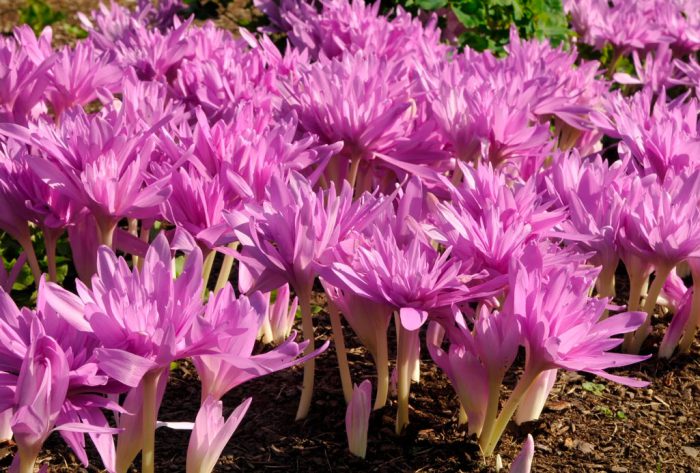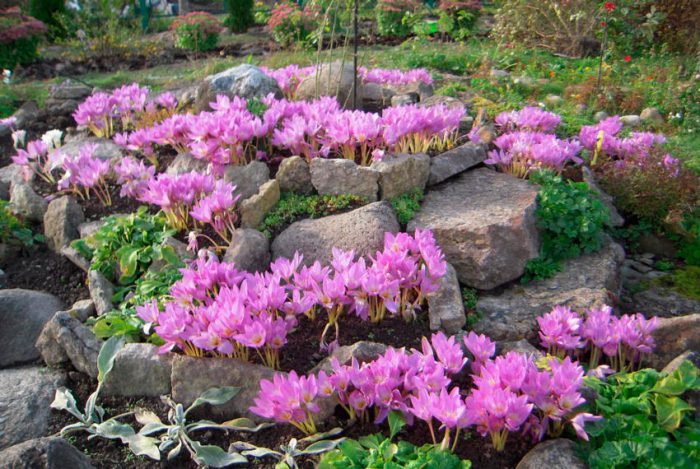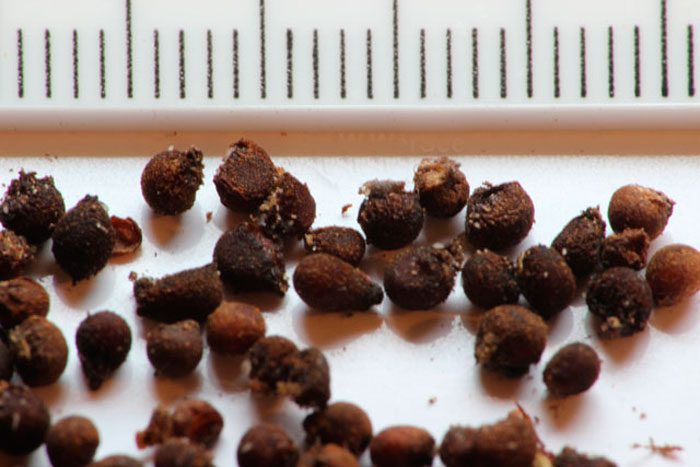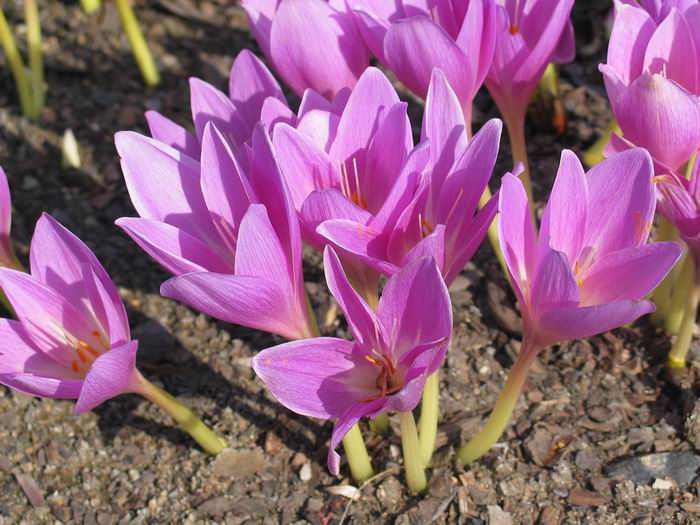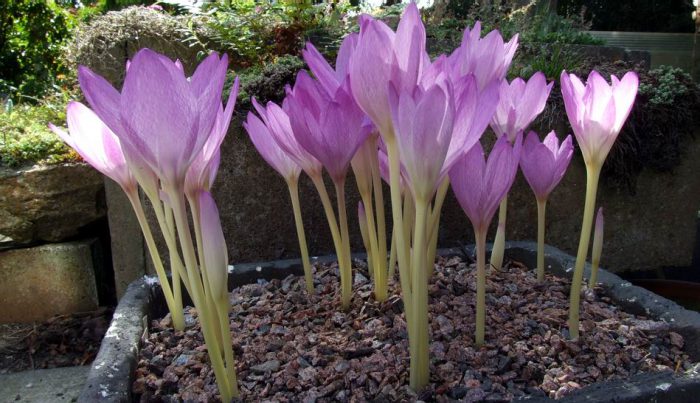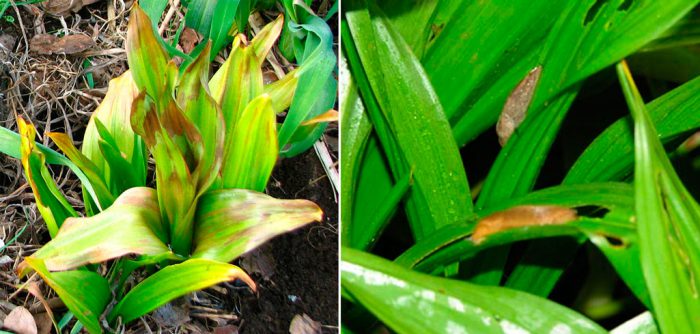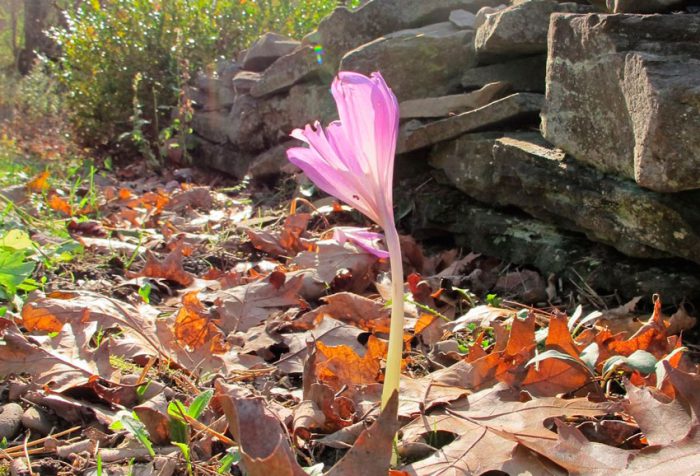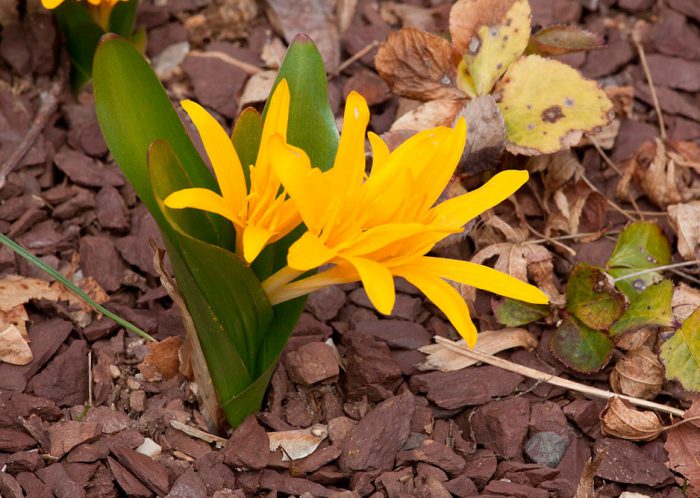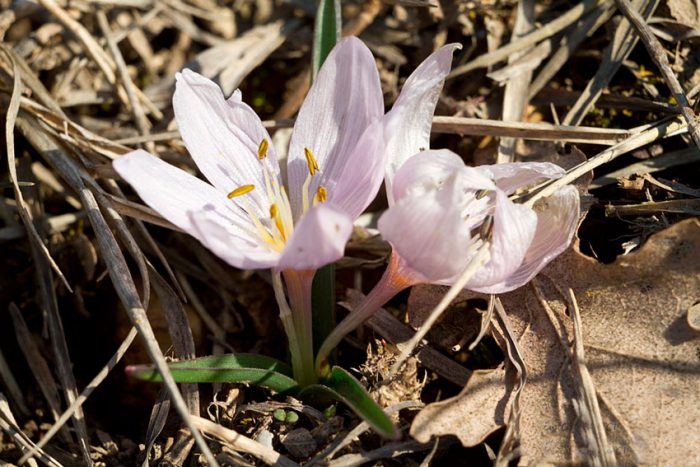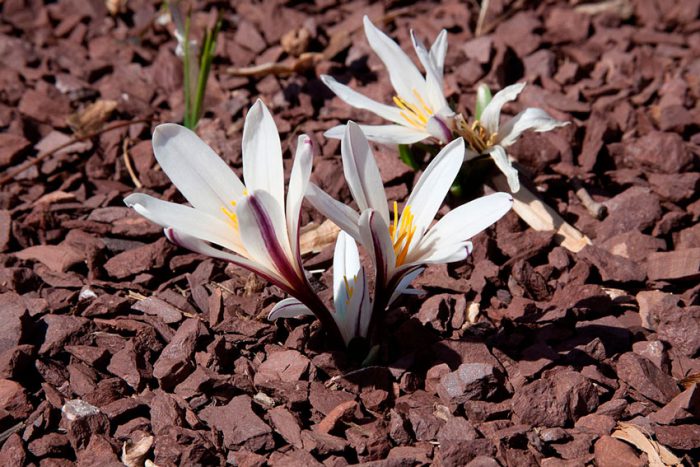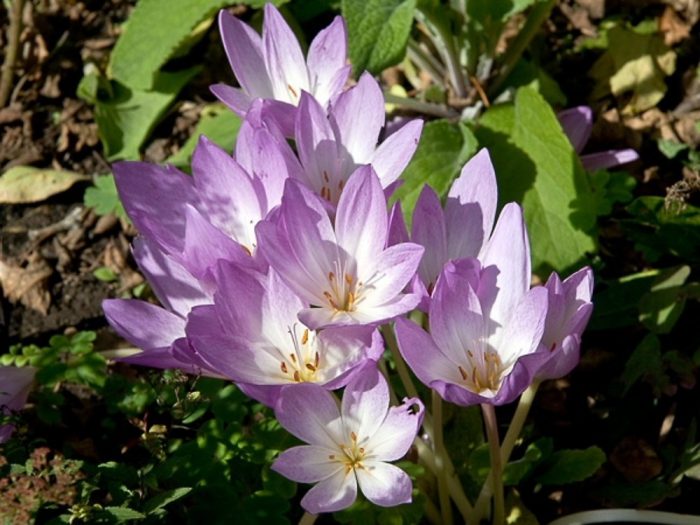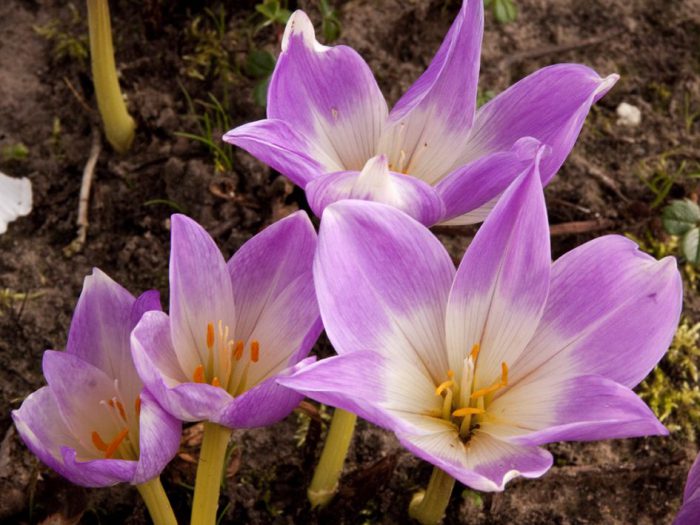Colchicum (Colchicum) is also called colchicum, as well as autumnal. It is related to the genus of flowering perennial plants of the columbia family. Under natural conditions, such a plant can be found in Western and Central Asia, North Africa, Europe and the Mediterranean. This genus unites about 70 species of various plants. The Latin name for such a plant comes from the word "Colchis", which translates as "Colchis" - an area in the Black Sea region, the fact is that there you can meet several types of colchicum. The people call such a plant "timeless color" or "autumn color", and all because there are several types of crocus flowers that bloom in late autumn. Such a flower is cultivated in all areas where there is a temperate climate.
Content
Features of crocus
Such a herb is a perennial, and it is also an ephemeroid. It has a large number of short shoots, on which large lanceolate-elongated leaf plates are located. They grow and develop during the spring, and by the beginning of the summer period they completely die off. On the surface of the corms there is a brown shell. This shell forms a long tube that encloses the lower part of the flower. Most of the crocus species bloom in the spring. However, in some species, flowering occurs in the spring. Single funnel-shaped flowers grow from the soil. The length of such a flower, together with the perianth grown into a tube (most of it is located under the soil surface), is 20 centimeters. The fruit is a three-celled oval spherical capsule. Such a plant contains poison, Dioscorides himself mentioned this in his works. It should be remembered that the poison is in any part of the plant.
Cultivation of crocus from seeds
The seed method of reproduction of crocus takes a lot of time. The fact is that a plant grown in this way begins to bloom only 6 or 7 years later, after the bulb grows and gains strength. However, in this way, only a few species of this plant can be propagated, which bloom in spring, and also species that do not form daughter bulbs (for example, yellow crocus). For sowing seeds, moist, loose soil saturated with nutrients is used.Sow ripe seeds almost immediately after harvesting (usually at the beginning of summer). Immediately before sowing, they are immersed in clean water for some time. The seeds are not buried deeply. In the event that it was not possible to sow the seeds immediately after collection, then before direct sowing they will need to be subjected to six-month stratification. To do this, they must be placed on the refrigerator shelf. Instead of soaking, it is recommended to put the seeds in a sock or stocking, which must be fixed inside the toilet cistern. After each flush, the seeds are washed, thereby removing inhibitors, and this contributes to a significant increase in seed germination.
Sowing seeds should be done in open soil. Before sowing seeds, holes are made on the garden bed, at the bottom of which you need to place a good drainage layer, and not very much sand should be poured over it. The first shoots can be seen only with the onset of the next autumn period, but sometimes seedlings appear a little later. Caring for the crocus seedlings will not be difficult. So, it is necessary to thin out the seedlings and when it is necessary to water them, while watering stops after the leaf plates die off, also do not forget to weed regularly. And young plants need to be covered in autumn so that they do not freeze in winter. It will take experience and patience to grow such a flower from seed.
Planting a crocus in open ground
What time to plant
For planting croplands, it is recommended to choose well-lit areas, however, even in a little shade, they grow and develop quite well. But it should be borne in mind that if such a flower is planted in a shady place under the trees, then slugs can start on it. Plants need a well-drained soil, because their root system reacts negatively to stagnant water. For planting, you can choose an alkaline or acidic soil, as well as not very heavy clay, which should not be oversaturated with moisture. It is recommended to place juniper or peonies in the neighborhood with such flowers, the fact is that their beautiful leaves will distract from the crocus at a time when its foliage becomes yellow and nondescript.
Those species which bloom in autumn should be planted in mid-August. If the bulb is large enough, then it can bloom in the first year.
How to plant a crocus
When planting such a plant in open ground, it is necessary to maintain a distance between the specimens, which is 10–20 centimeters. Small bulbs should be planted to a depth of at least 8 centimeters, and large ones no more than 20 centimeters. When planting the bulbs, wood ash (1 liter of substance per 1 square meter), as well as superphosphate (1 full large spoon per 1 square meter) must be added to the soil. During planting, special attention should be paid to the tubes on the bulb, which are formed by scales. They must necessarily look out of the ground, since buds will subsequently appear from them. You should not cut off such a tube, since in this case the resulting bud will need to push the heavy layer of soil apart to get to its surface. Before planting, the soil must be prepared, for this, during digging, half a bucket of sand and 1 bucket of humus are introduced into it at the rate of 1 square meter. Colchicum planted with bulbs begin to bloom after 1.5 months.
Harlequin care
There is nothing difficult in caring for such a plant. Watering should be done only at a time when the plant is blooming, and then this should be done only during periods of prolonged drought and heat. At other times, watering such a flower should not be done, because it will have enough natural precipitation. Remember to avoid waterlogging of the soil.
Top dressing is done 2 or 3 times per season. To do this, use a complex mineral fertilizer (30 grams per 1 square meter), while preparing a weak solution (2 grams of a substance per 1 liter of water).Remember that the fertilizer must contain nitrogen. In autumn, compost should be added to the soil. It is also necessary to systematically loosen the soil surface and remove weeds.
How to transplant
In one and the same place, this flower can be grown for a long time (about 6-7 years), then it must be transplanted to a new place. However, experienced gardeners advise transplanting at least 1 time in 2 or 3 years, otherwise the bulbs grow and it becomes very cramped for them, while the flowers become smaller.
The best time for both planting and transplanting such a plant is August. At this time, the crocus is at rest. However, the bulbs must be dug out in advance, after the leaf plates turn yellow, as a rule, this time falls on the second half of June. The soil must be carefully removed from the bulbs, and the remaining leaves must be removed. Separate the daughter bulbs from the maternal ones, while taking into account that the latter are not used for subsequent planting. Then the bulbs should be carefully washed in running water, after which they are placed in a solution of potassium manganese for 30 minutes for disinfection. Then the tubers need to be thoroughly dried and stored in a dry, dark place, while the air temperature should be approximately 24 degrees. With the onset of August, the separated daughter bulbs must be planted in the ground. In this case, the landing rules are exactly the same as those used for planting the crocus (described above). In this case, do not forget to pre-fertilize the soil.
Diseases and pests
Snails and slugs can settle on such a flower. Such pests feed on its leaves. If the soil is almost constantly waterlogged, then this can cause the development of gray rot. In order to avoid the appearance of slugs, the surface of the row spacings must be covered with a layer of crushed shells, fine gravel, or egg shells. And along the perimeter of the site, you can place plastic gutters into which you need to pour water. They will become an insurmountable obstacle for slugs and snails.
If the crocus is regularly watered abundantly for a long time, then gray rot may appear on it, which belongs to fungal diseases. In the event that the flower is not very infected, then you can try to cure it. To do this, it is recommended to process the bush with a Champion, Topaz, Cuproxat or another agent similar in effect. Before processing, those parts of the plant that are severely affected should be cut and burned. Then you need to revise the irrigation schedule.
After flowering
There are gardeners who cut the wilted flowers and leaves of such a plant to preserve the attractiveness of the flower garden. However, this is by no means necessary. The fact is that a ripening onion needs all vitality. In this regard, only those parts that have disappeared on their own need to be removed from the site.
The main types and varieties with a photo
Most of the crocus species bloom in the autumn. However, there are also species that bloom in early spring, but they are not so popular with gardeners.
Spring blooming
Colchicum yellow (Colchicum luteum)
In natural conditions, this species prefers to grow in the edges of the rocky glaciers of the Himalayas, Pamir, Tien Shan and Tibet. It has been cultivated since 1882. The flowering of such a plant begins immediately after the snow cover melts. Flowers of three centimeters in diameter have a deep yellow color, while their height is no more than 15 centimeters. Dark green flat leaf plates grow at the same time as flowers.
Colchicum hungarian (Colchicum hungaricum)
Hungary is considered the birthplace of such a flower, but it can also be found in Greece, Albania, and also in the territory of the former Yugoslavia. Flowering occurs in late winter or early spring. Pink-purple or white flowers have maroon anthers.The upper part and edge of the leaf plates, which grow while the plant is blooming, have a dense coating of hairs on their surface. The most popular variety is Velebit Star.
Colchicum Ankara, or three-leaved, or Biberstein (Colchicum ancyrense, Colchicum biebersteimi, Colchicum triphyllum)
This plant is considered the earliest ephemeroid. So, in some cases, its flowering begins in the last days of December, and ends in April. Under natural conditions, this species can be found in Moldova, in the southwestern regions of Ukraine, in the Crimea, as well as in the western regions of Turkey. Each specimen has 3 narrow, oblong, grooved leaves of a bluish color, the edge of which is ciliated, as well as from 2 to 4 flowers of pink-purple color.
Colchicum Regel, or Kesselring (Colchicum regelii, Colchicum crociflorum, Colchicum kesselringii)
Under natural conditions, it is most often found in subalpine and alpine belts, which are located at an altitude of at least 2 thousand meters above sea level. And you can also meet this kind in the Tien Shan and Pamirs. There is an oblong bulb and 2–7 obtuse grooved leaves, the edge of which is finely toothed or smooth. On the specimen, there are from 1 to 4 white flowers, on the seamy side of the lobes of the limbs there are violet-purple stripes. Flowering begins immediately after the snow cover melts.
And also popular among gardeners are such species as: Sovicha, water-loving and bunchy.
Autumn blooming
Autumn colchicum (Colchicum autumnale)
Prefers to grow in meadows and forest glades. Under natural conditions, this kind can be found in European countries from the Carpathians and Latvia to England and Western France. He is sometimes met at an altitude of more than 2 thousand meters above sea level. The bush of such a plant reaches no more than 40 centimeters in height. Flat, erect, oblong-shaped leaf plates grow in spring, and by the beginning of summer they turn yellow and wither. One bulb grows from 1 to 4 flowers, painted in a pale lilac or white color, the diameter of which is 7 centimeters. The following forms are more popular:
- Autumn white - this form can be met infrequently in natural conditions. From the middle of September, 5–7 flowers appear on one bulb, the length of which is no more than 15 centimeters. Their center is yellow, and the perianth is snow-white.
- Autumn terry - the length of purple flowers is about 12 centimeters, while their diameter is 5 centimeters. Each flower has many petals (about 35 pieces). The length of the dark green leaf plates is 25 centimeters, and their width is 4 centimeters. Flowering begins later than other species, namely, in the last days of October.
- Autumn white terry - each double white flower has about 45 petals. The plant blooms from mid-September.
- Autumn neddist - this form was brought out in the Czech Republic. The flowers are light pink.
And there are also such forms in which the flowers are painted in dark purple or purple. The flowers of the Baconsfield cultivar have a white center and a purplish pink color.
Colchicum magnificent (Colchicum speciosum)
The homeland of this species is Turkey, Transcaucasia and the northern part of Iran. The height of the bush is about half a meter. The length of the rich green leaf plates is about 30 centimeters, and their width is 6 centimeters. The leaves have a wavy edge. They die off by the beginning of the summer period. Large flowers are painted in lilac or mauve color, they have a long tube of white color. Flowering begins in September. This species has many garden forms, for example: dark red, Turkish, white, giant, etc. The most popular varieties are:
- Huxley - mauve flowers gradually change their color to deep purple.
- Waterlely - double flowers of lilac color.
- Premier - this variety is late flowering. Its flowers are very bright and have a lilac-pink color.
In addition to these autumn-flowering species, they also grow such as: Fomina, Stevina, Trudy, Sibtropa, Jerusalem, shady, bright, Pannonian, Neapolitan, Kochi, Cilician, Byzantine, variegated, Bornmüller, dark purple, etc.
Among the hybrid forms, the most popular are: Autumn Herald, Princess Astrid, Dick Trotter, Violet Queen.


Watch this video on YouTube

